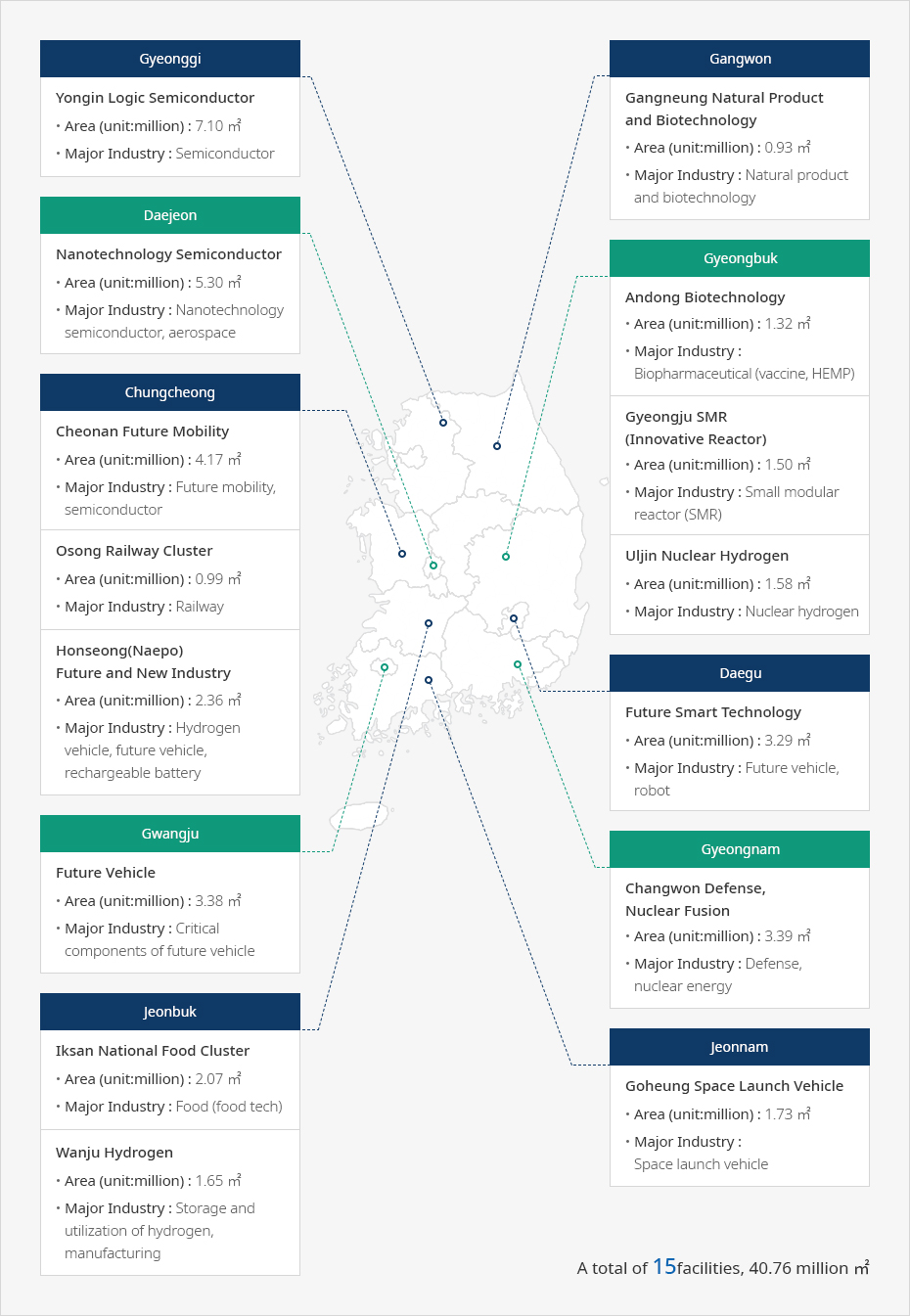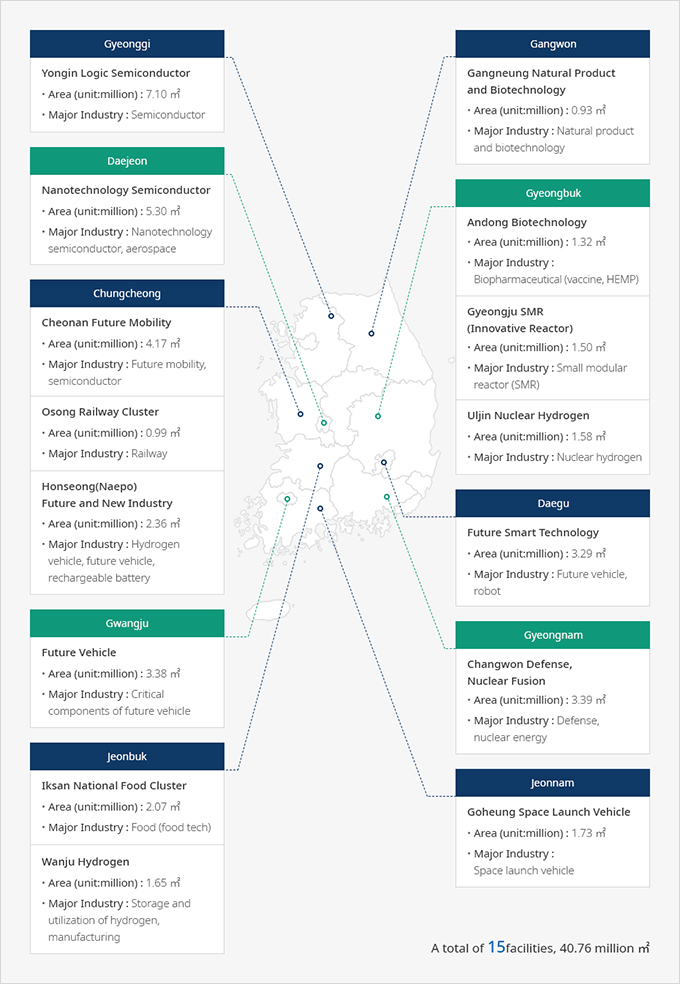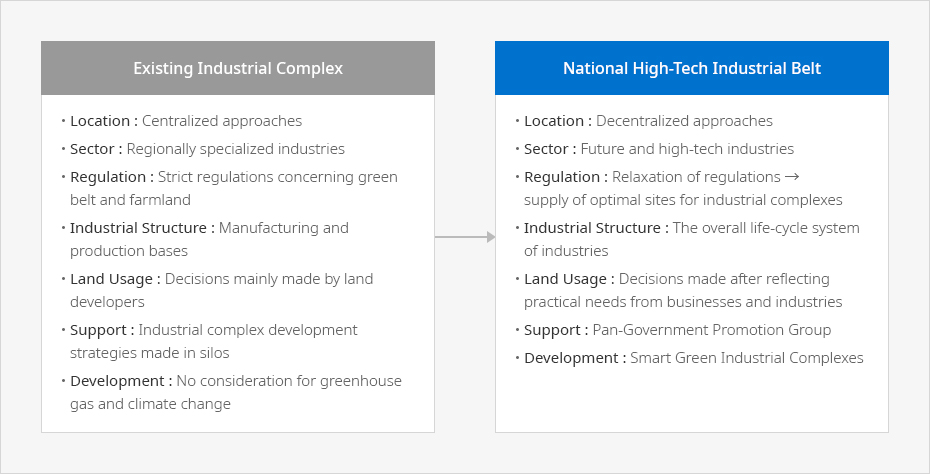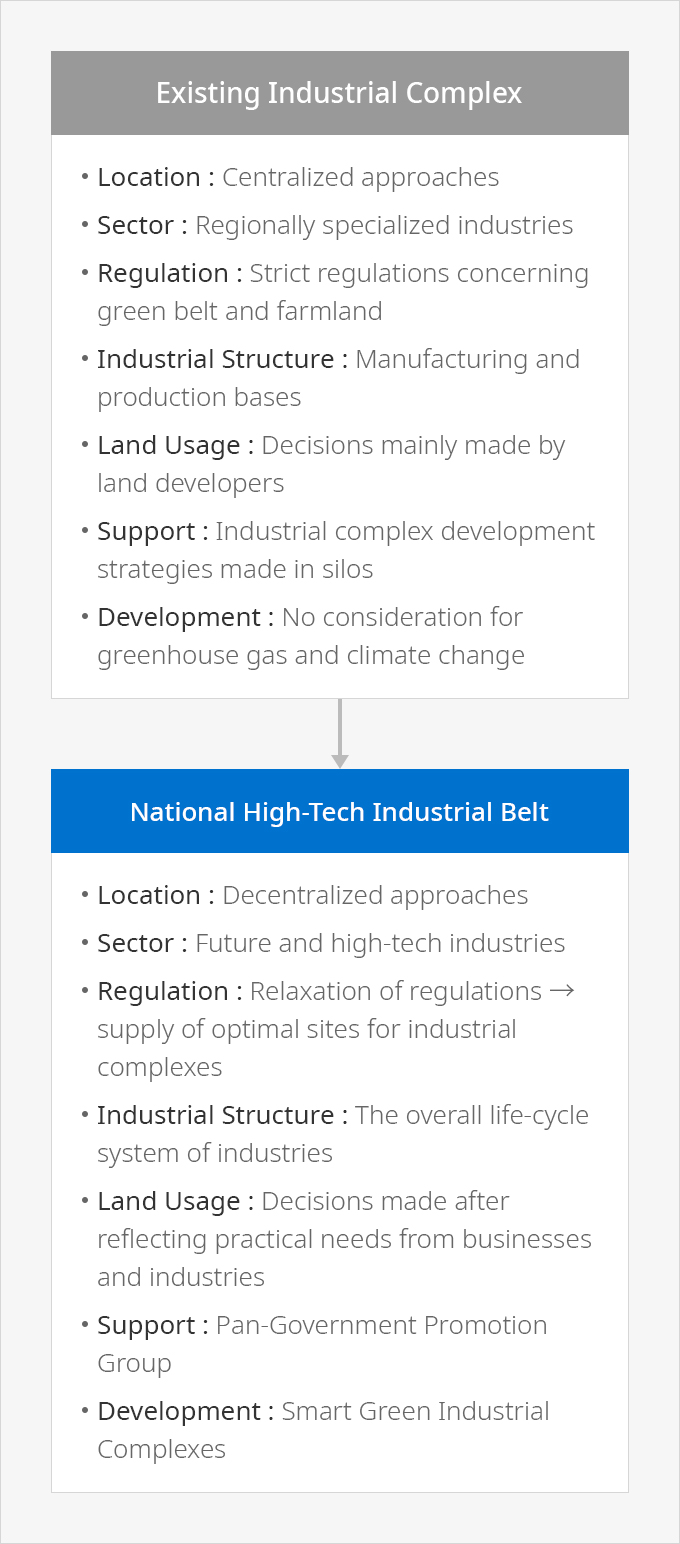High-tech industrial complexes will be constructed across the nation in a balanced manner by fostering
regionally specialized industries to develop future and high-tech industries. Proposals for demands for
technologies and locations of industrial complexes were made by each region after they had analyzed
their comparative advantages, before the central government selected potential industrial-complex sites
after accounting for their relevance to the national strategic industries and balanced growth throughout
the nation. A total of 15 national industrial complexes will be constructed on sites spanning 40.76 million ㎡,
which will come with a significant support by the government to induce corporate investment in
an attempt to nurture future and high-tech industries, such as semiconductors, future vehicles,
aerospace, and nuclear power.
Details of Selection Process
Local governments are at the forefront of these development plans leading the
efforts to nurture high-tech industries under multi-faceted support from the central government for
implementing their plans, which indicates these projects are to promote genuine growth in local areas.
-
Regulations concerning restricted development zones (RDZ), that have been a
roadblock to constructing industrial complexes in the local regions, will be eased to ensure
seamless process of industrial complex site selection as planned. Urban Innovation Hubs (MOLIT),
National Advanced Strategic Industries, Specialized Complex for Materials, Parts, Equipment
(MOTIE), and Smart Innovation Districts (MSS) will be located mainly in non-capital areas,
including currently candidate sites for industrial complexes and their neighboring areas, to make
sure these industrial complexes take root in the local regions.
※ (Benefits) Support construction of smart offices in
rural areas/KRW 4 billion investment by 2023
-
Going beyond building just manufacturing and production facilities, overall
life-cycle system raging from technology development, demonstration to logistics will be built,
which will be connected with nearby industrial hubs (existing industrial complexes, intermediary
supporting organizations) to boost the integrity of the ecosystem. Talents in semiconductor and
other high-tech industries will be fostered in local areas by expanding semiconductor contract
departments in universities, designating specialized universities (graduate schools) and Korea
Institute of Startup & Entrepreneurship Development (KISED)*, and coming up with supportive
measures for meister high schools.
※ (Benefits) Commercialization funds (up to KRW 100-300
million), capacity strengthening programs
-
In order to speed up the establishment of industrial complexes, while fully
reflecting practical needs, prior discussions with the organizations concerned and expedited
preliminary feasibility tests will take place to guarantee the timely completion of the projects.
In addition. “Pan-Government Promotion Group for National High-Tech Industrial Belt” will be
formed to make sure companies are able to engage in the industrial complex projects from planning
stage.
-
Lastly, the Basic Plan for Smart and Green Industrial Complex was established
to respond to climate change and carbon neutrality, and measures to improve living conditions in
the industrial complexes to create a youth and worker-friendly environment were
discussed.
Major changes in Strategies in Establishment of Industrial Complex















